What is Virtual Desktop Infrastructure (VDI)?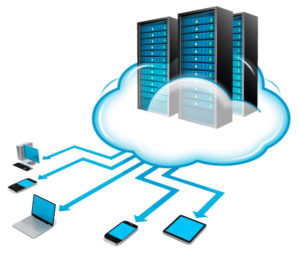
VDI is a technology that allows end users to access a Windows desktop with all their business applications at any time, from any type of device (Windows, Apple, Android), from any location with an Internet connection. The VDI concept may be a bit hard to grasp. Let’s break it down.
Conventionally speaking, windows desktops, applications, and files are hosted on a personal computer (PC) located on your desk (or your lap if it’s a laptop). A PC has multiple components needed for it to work.
- The computer (CPU, RAM, Storage) with monitors, a key board, and mouse.
- An operating system (OS) and some applications (Office, Web Browser, Etc.)
- A wired and/or wireless network card for connecting to the Internet and or a Local Area Network (LAN)
With VDI technology, a user’s Windows desktop, applications, and files (i.e the users “Cloud Desktop“) are hosted on servers in a data center. And users can connect to this cloud desktop from any Windows, Apple or Android device with a secure Internet connection.
Here are some user types served by VDI:
Call Centers
Call center environments are somewhat of a traditional use case for VDI. The unique characteristics of call centers — many workers using the same tools, frequent changes in user stations, high turnover — make it the perfect setting for VDI. VDI allows all call center agents to access just the information and tools they need, making the call center’s computing system more efficient and cost-effective. The structure of a virtualized platform also makes it possible to scale the call center much more quickly.
Remote and Mobile Workers
The modern information workforce is often on the move and working remotely. In fact, over half of information workers work remotely some of the time. Virtual Desktop Infrastructure allows all team members to access securely the same company network and resources regardless of where they are or the device used to connect.
Bring-Your-Own-Device (BYOD)
This is another popular real-use case for a VDI. In today’s tech-obsessed work environment, many employees, from interns to the CEO, have specific devices that they prefer to use, both for personal and business purposes. In 2007, it was reported that 87% of companies rely on their employees using personal devices to access business apps.
Allowing for a bring-your-own-device policy can bring with it a whole host of headaches for an IT department, from installing the appropriate programs on these devices to ensuring the security of these devices. The lack of control over personal devices makes securing the business network a near impossibility. VDI offers a solution. Business desktops, apps, and files can be accessed from any device without leaving the security of the data center where they can be centrally controlled and maintained.
Contractor and Partner Access
Similar to the problems involved in BYOD, contractors and partners pose a challenge for businesses. When outsourcing projects, these businesses must either supply contractors with company-owned devices or deal with multiple environments presented by the contractors’ devices. VDI allows for the perfect compromise. Contractors receive secure access to the company platform on their own devices.
What’s the difference between VDI and Desktop as a Service (DaaS)
Often times VDI and DaaS are used interchangeably, but there is a difference. VDI is the underlying technology that makes the virtual desktops possible while DaaS is a marketing term used by cloud service providers using VDI to deliver virtual desktops to their customers. In other words, DaaS is VDI that you buy as a service from a vendor.
Benefits of VDI?
Why would anybody use VDI technology? What’s the point in hosting a user’s desktop, applications, and files on a server in a data center potentially hundreds of kilometers away? The top three reasons are: mobility, security, and cost. More and more, employees are working from home and on the road. VDI technology allows users to bring their cloud desktop with them wherever they have a PC, Mac, or mobile device with an Internet connection.
VDI also improves manageability and control over business information, particularly in the age of bring-your-own-device (BYOD). With VDI, no applications or data is downloaded to the user’s device. Thus, a lost or hacked device does not compromise security. Everything stays safe within the data center, behind layers of network and physical security.
Larger companies realize that buying and maintaining PCs/Laptops for their staff is expensive. Through VDI, they are able deliver IT services more cost effectively through standardization, centralized infrastructure and management, and dynamic resource management. For example, with VDI compute resources (RAM, CPU, Storage) can be scaled easily to meet demand, new user cloud desktop can be created or removed in minutes, and more robust monitoring and access controls can be deployed.
Benefits of DaaS?
In the past, VDI solutions were implemented by larger organizations because VDI is expensive to implement, is complicated, and requires significant expertise to setup and maintain. However, by consuming VDI from a DaaS service provider, these barriers to entry are removed. Through DaaS, organizations of all sizes can fully realize the benefits of VDI immediately on subscription basis. There is no CapEx investment required to get started, there is no need to hire or train IT personnel, and there is a predicable per desktop pricing model.
Use Cases Against Adopting DaaS
Desktop-as-a-Service is an excellent solution for many organizations but may not work well if you have an unreliable Internet connection or use software graphics intensive software, such as 3D rendering or video editing software, that require a graphics processor.
Specialized VDI deployments are possible for this use case but they are expensive. Also, some software vendors have special licensing requirements for VDI desktops that can add cost and get in the way of a deployment.
Also, if a large organization already has the IT expertise and resources to deploy and maintain its own VDI infrastructure then it may be more cost effective to do it in-house than outsource to a DaaS provider.
Types of VDI Implementations
There are a number of different types of VDI solutions available from DaaS providers and it is important to understand the basic differences.
Persistent vs Non-Persistent VDI
With persistent VDI, each user gets his or her own desktop that they can configure and those configurations are maintained between sessions. This version of VDI is the most similar to the PC experience. In contrast, with non-persistent VDI, a new desktop is created from a base-image every time the user logs-in. So at the end of the user’s session all changes to the desktop are lost. Non-persistent VDI has some use-cases, such as in classrooms and kiosks but is not generally preferred by business users. Speak to the DaaS provider to determine the options available.
Shared vs Dedicated VDI
The difference between a shared and a dedicated VDI infrastructures is most relevant with regard to DaaS providers. When engineering their DaaS offering, providers must choose between maximum efficiency (i.e. revenue potential from a given set of resources) and maximum security for each client. To maximize efficiency, DaaS providers will implement a VDI platform that maximizes the sharing of compute, network, storage, and software resources between clients. As a result, the boundaries between different clients on the platform are weak and the profitability of a security or performance issue with one client impacting other clients on the same platform is much higher.
This is not theoretical as there are many documented instances of many customers on a shared DaaS and web hosting platforms being compromised due to a problem with a single customer. In contrast, some DaaS providers sacrifice resource efficiency by implementing VDI platform that better segregates customers by assigning them dedicated resources. Generally, DaaS providers that offer dedicated VDI solutions also have more flexibility to customize their service to the customer’s unique business requirements. If security is important, be sure the DaaS provider will host all your users an a VDA dedicated to your company and the VDA has been assigned a dedicated LUN and vLAN .
Desktop vs Application VDI
Some VDI technologies, allow users to access hosted applications directly, bypassing the virtual desktop. This flexibility is a good particularly where the user is primarily using a single application on their virtual desktop and wants to use it like any other application on their Windows, Apple, or Android device. If the DaaS provider is using an enterprise-class VDI technology, like Citrix, then they should offer the option of both Virtual Desktops and Applications.
What is the role of Thin Client, Zero Clients, and Cloud Desktop Hubs with VDI?
To connect to a virtual desktop you need a device with a small Windows, Apple, or Android application installed that secures and optimizes the devices connection to the VDI platform. As the virtual desktop is running on the VDI platform and not the device accessing the virtual desktop, the end user’s device only needs an internet connection, a screen, and an input device to function. This means that workstations running virtual desktops can be inexpensive devices — marketed as Thin Clients, Zero Clients, and Cloud Desktop Hubs — engineered specifically for the purpose of connecting to virtual desktops. In larger VDI/DaaS deployment this becomes an important feature in reducing total cost of ownership.
To learn more about Concero’s Cloud Desktops (DaaS) or try a free trial go here.
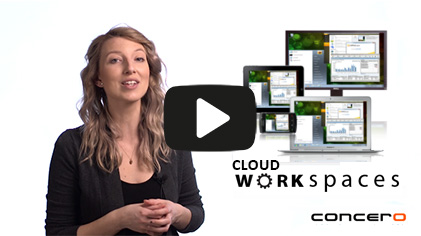
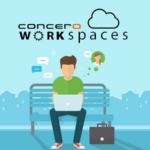
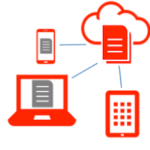
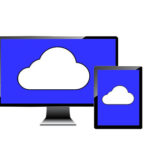

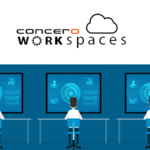
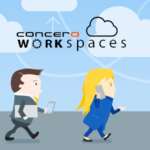


Hi,
In the Above Article, I got the Full Information about the virtual desktop infrastructure and desktop as a Service. The Article is Explained with batter examples and Deep information. It can be very helpful for me. The article was so informative for the users.